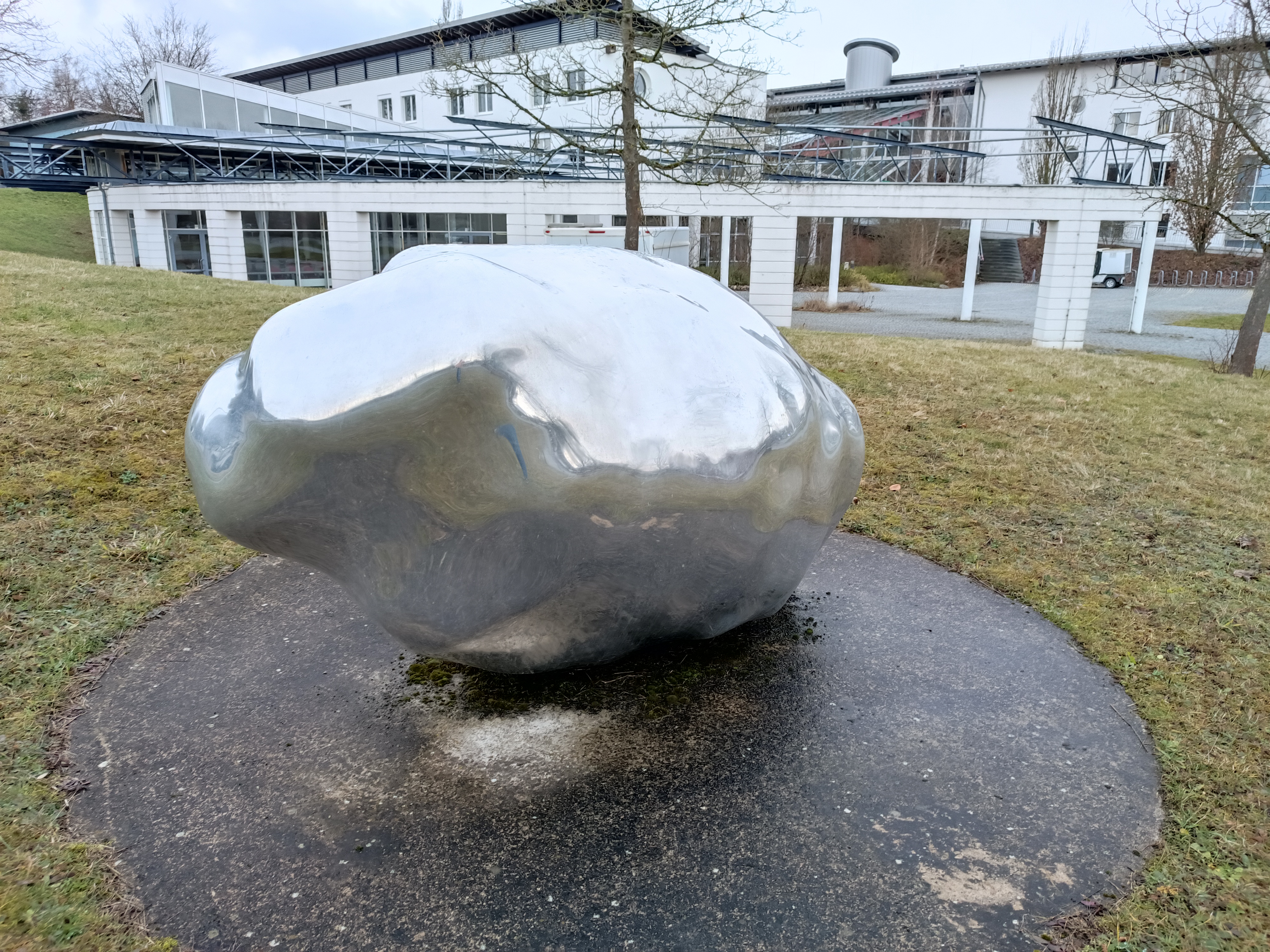TrashStone
The TrashStone was erected between the sports building and the university administration in 2021. Wilhelm Mundt himself describes this object as a ‘meteorite that comes from somewhere else’. The name ‘TrashStone’ refers to the materials used: plastic waste that has been pressed into a new, fascinatingly glittering form.

The TrashStone was erected between the sports building and the university administration in 2021. Wilhelm Mundt himself describes this object as a ‘meteorite that comes from somewhere else’.
This sculpture is part of a series that Mundt began around 25 years ago. It stems from an art movement called Crossover, which attempts to combine the everyday world with aesthetics. Mundt collected objects in his studio that he used while working on his artworks. He has wrapped these objects in foil and polished them so that the rubbish inside disappears and only the shiny surface remains visible.
The TrashStone is a perfect example of this technique. Although we know that there is rubbish inside, the outer appearance does not remind us of it at all. Instead, the sculpture appears friendly, glittering and shiny. Mundt is playing with the idea that the world can be rotten on the inside, even if it appears shiny on the outside.
Interestingly, there were initially concerns within the faculty as to whether they could identify with a work of art called ‘TrashStone’. They did not necessarily want to be associated with rubbish. After lengthy discussions, a different location was finally found for the sculpture, and so it stands here today.
The TrashStone invites us to reflect on the discrepancy between outer appearance and inner reality. It symbolises the combination of everyday materials and artistic aesthetics and shows how art can encourage us to question our perceptions.
